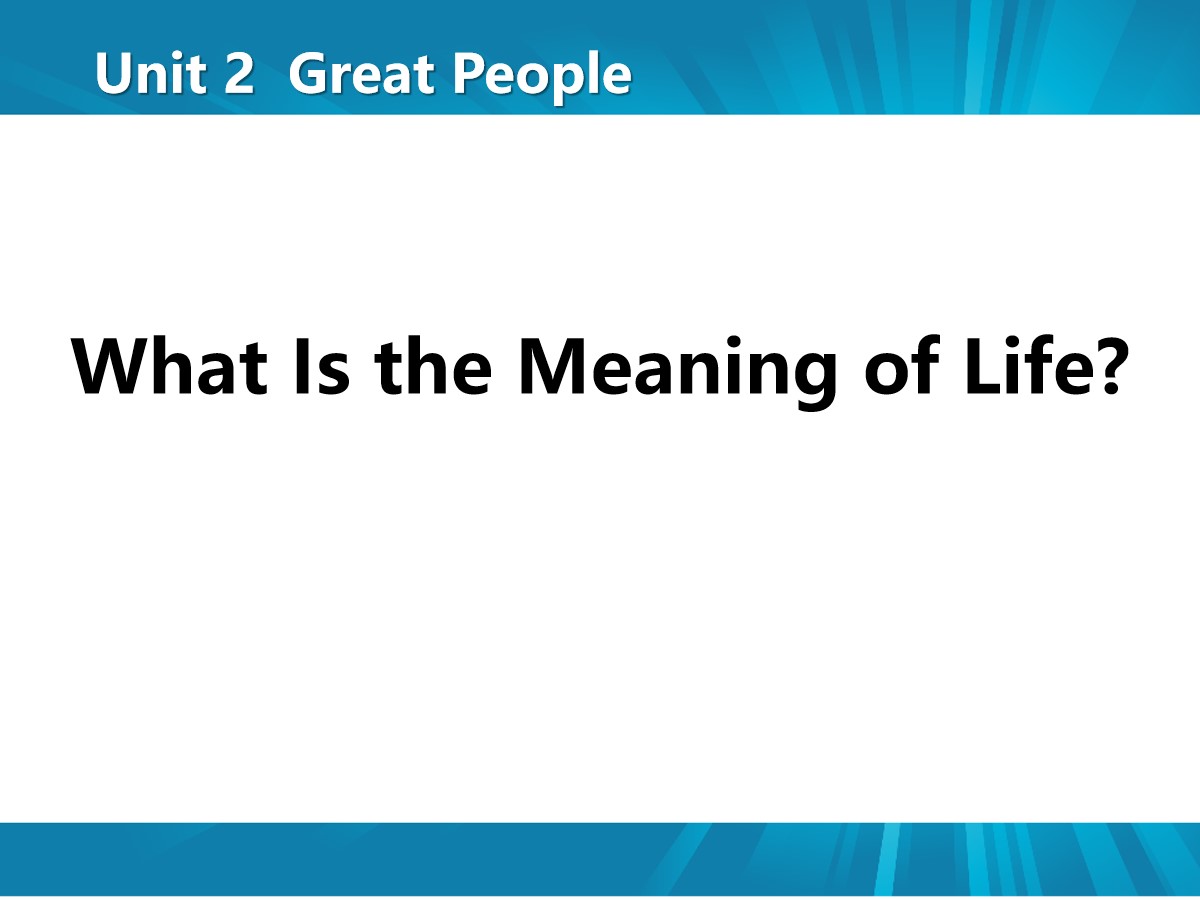《The Fisherman and the Goldfish(I)》Movies and Theatre PPT免费课件
![]() 0
0
 《The Fisherman and the Goldfish(I)》Movies and Theatre PPT免费课件
《The Fisherman and the Goldfish(I)》Movies and Theatre PPT免费课件
《The Fisherman and the Goldfish(I)》Movies and Theatre PPT免费课件
第一部分内容:Warming up
Have you ever acted in a class or school play? What play was it? What role did you play?
Have you read the story The Fisherman and the Goldfish?
... ... ...
The Fisherman and the GoldfishPPT,第二部分内容:Reading
Read the lesson and number the sentences in the correct order.
□The fisherman told his wife about catching a goldfish.
□A poor fisherman with a hat went out fishing.
□The wife wanted the fisherman to ask for a new house.
□The fisherman let the talking fish go.
□The fisherman caught a talking fish.
Complete dialogue with the words or phrases in the box.
whatever wish for open… up jump
A: This is a magic box. You can find _________ you want in it.
B: Really? Can I _____ it ___ now?
A: Sure. What do you ________?
B: I wish a little dog would ______ out of the box.
A: No problem. Wait and see! It’s time to witness a miracle.
... ... ...
The Fisherman and the GoldfishPPT,第三部分内容:Language points
1. My wife and I lead a poor life.
我和妻子过着贫穷的日子。
wife n. 妻子
e.g. He lived a happy life with his wife.
他和他的妻子过着幸福的生活。
lead作动词时,有“带领;领导”的意思,其过去式和过去分词为led。
e.g. He led the people from victory to victory.
他领导人民从胜利走向胜利。
Our monitor led the discussion.
我们班长主持讨论。
Mr. Wang leads a basketball team.
王老师带领一支篮球队。
此外,lead常见的短语有: lead a(n) ... life意为“过着……的生活”;lead to意为“通向;导致”。
e.g. We lead a very quiet life.
我们过着非常安静的生活。
All roads lead to Rome.
条条道路通罗马。
Too much work leads to illness easily.
工作太多很容易导致人生病。
2. It said it could give me whatever I wished for.
它说我想要什么它就给我什么。
whatever引导让步状语从句,其含义相当于no matter what,意为“无论什么,不管如何”。
e.g. Whatever you do, don’t miss this exhibition.
无论你做什么,都不要错过这次展览。
wish可以作名词,意为“希望,祝愿”。
e.g. He closed his eyes and made a wish.
他闭上眼睛,许了个愿。
I’m sure that you will get your wish.
我相信你会心想事成的。
... ... ...
The Fisherman and the GoldfishPPT,第四部分内容:Grammar
语态是动词的一种形式,表示句中主语和谓语动词表示的动作之间的关系。主动语态表示主语是动作的执行者,被动语态表示主语是动作的承受者。
被动语态通常由“助动词be +及物动词的过去分词”构成。被动语态可用于多种时态,常见的有一般现在时、一般过去时和一般将来时的被动语态,其结构如下:
一般现在时的被动语态:am / is / are +及物动词的过去分词
一般过去时的被动语态:was / were +及物动词的过去分词
一般将来时的被动语态:will + be +及物动词的过去分词
注意:含情态动词的被动语态的结构是:情态动词+be + 及物动词的过去分词。
被动语态的用法
被动语态主要用于以下几种情况:
1. 强调动作的承受者。
e.g. This kite was made by my father.
这个风筝是我父亲做的。
2. 不知道动作的执行者或没有必要提及执行者。
e.g. It can’t be done in a day.
它不能在一天内完成。
3. 有些动词习惯上常用被动语态。
e.g. She is said to be a good doctor.
据说她是一个好大夫。
... ... ...
The Fisherman and the GoldfishPPT,第五部分内容:Homework
Work on your assigned task for the movie or play.
《单元主题写作》Movies and Theatre PPT 第一部分内容:话题分析 本单元的话题为电影和戏剧。通过本单元的学习,学生要能用英语表达出自己喜欢的电影、电视剧或话剧等,能对电影情节..
《单元语法聚焦》Movies and Theatre PPT 第一部分内容:教材典句 1.Have you ever been involved in making a movie or a play? 你们曾经参与过拍电影或戏剧吗? 2.When movies were..
《单元基础知识过关》Movies and Theatre PPT 第一部分内容:基础知识清单 重点单词 1.导演;院长;校长;主任 ________ 2.导演;指导;指示 ________ 3.背景;背景资料 _________..
















 关于我们
关于我们 备案号:冀ICP备18037400号-20
备案号:冀ICP备18037400号-20